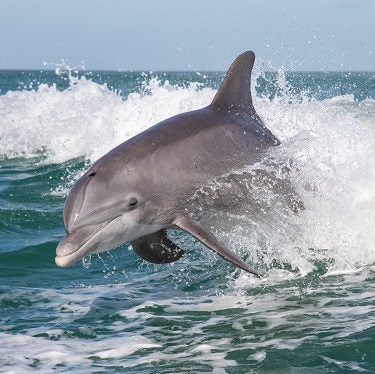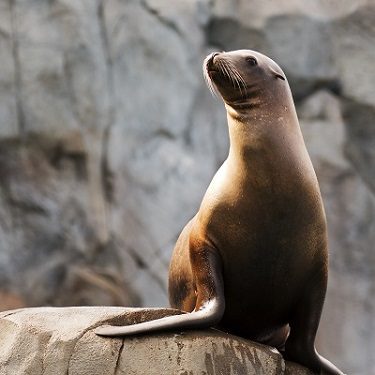Marine Life Encyclopedia
Cephalopods, Crustaceans, & Other Shellfish
Peacock Mantis Shrimp
Odontodactylus Scyllarus
Distribution
Tropical Western Pacific and Indian Oceans
eCOSYSTEM/HABITAT
Soft Sediments Associated with Coral Reefs
FEEDING HABITS
Active Predator
TAXONOMY
Subphylum Crustacea (Crabs, Shrimps, and Relatives), Order Stomatopoda (Mantis Shrimps)
Females are also brightly colored but are mostly red. Peacock mantis shrimp are powerful hunters, feeding on hard-shelled invertebrates of all kinds and even some fishes. They are well known for the extremely fast punching motion that they do with their front appendages to kill and break apart their prey. This punch is one of the fastest movements in the animal kingdom and is strong enough to break through an aquarium’s glass wall. Peacock mantis shrimp use this behavior to break open snails and other mollusks and to completely dismember crabs, shrimps, and other crustaceans.
Peacock mantis shrimp are known to have extremely complex eyes, and can see in more wavelengths of color than even mammals. Under special lights/cameras, scientists have demonstrated that the already colorful exoskeletons of this species are actually even more elaborate when viewed by each other. Peacock mantis shrimp dig U-shaped burrows in the sand near the reef’s edge from which they venture out to hunt and to attract mates. They reproduce via internal fertilization, and after laying the eggs, the females carry them around on their front appendages until they hatch, protecting them and keeping them clean. Some peacock mantis shrimp may form monogamous pair bonds.
Peacock mantis shrimp are one of the largest and most colorful species of mantis shrimp and are therefore desirable for the private aquarium industry. However, individuals will often eat many of the other fishes and invertebrates in a tank, so some aquarists actively avoid this species. There is also a small market for eating peacock mantis shrimp in some Asian countries. Scientists do not have sufficient data to determine this species’ population trends, but as residents on coral reefs, human induced changes to this vulnerable ecosystem may also threaten the peacock mantis shrimp and other species.
Engage Youth with Sailors for the Sea
Oceana joined forces with Sailors for the Sea, an ocean conservation organization dedicated to educating and engaging the world’s boating community. Sailors for the Sea developed the KELP (Kids Environmental Lesson Plans) program to create the next generation of ocean stewards. Click here or below to download hands-on marine science activities for kids.
Additional Resources:
Get Involved

Donate Today
SUPPORT OUR WORK TO PROTECT THE OCEANS BY GIVING TODAY
With the support of more than 1 million activists like you, we have already protected nearly 4 million square miles of ocean.

TAKE ACTION NOW
Support policy change for the oceans
Decision-makers need to hear from ocean lovers like you. Make your voice heard!

VISIT OUR ADOPTION CENTER
SYMBOLICALLY ADOPT AN ANIMAL TODAY
Visit our online store to see all the ocean animals you can symbolically adopt, either for yourself or as a gift for someone else.

DOWNLOAD OCEAN ACTIVITIES
HELP KIDS DISCOVER OUR BLUE PLANET
Our free KELP (Kids Environmental Lesson Plans) empower children to learn about and protect our oceans!




